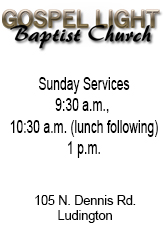
Dave Rennhack
#TheLand #OceanaCountyAgriculture
By Rob Alway, Editor-in-Chief.
HART TOWNSHIP — Change happens quickly at Rennhack Orchards. Because the family owned operation owns its own farm market — and grows a majority of its produce for that market — the Rennhacks can study consumer trends and adjust their products according to what the customer demands.
The farm market is located at 3731 W. Polk Road just outside the Hart city limits. The farm is located just about a mile to the southwest on 72nd Avenue. Dave and Joanne Rennhack started the farm in 1977 on land that Joann’s family had been farming for over 100 years. Its dominant crop is apples (grown on 90 acres) but the farm also grows sweet cherries, tart cherries, pumpkins, squash, sweet corn, tomatoes, peaches, and plums.
Dave says he has seen a lot of changes over the years, the biggest being marketing.
 “It used to be if you grew it, somebody would buy it. Now, you grow what the customer wants. We change rapidly on this farm. We add new varieties frequently and take out the varieties that the consumer doesn’t want.”
“It used to be if you grew it, somebody would buy it. Now, you grow what the customer wants. We change rapidly on this farm. We add new varieties frequently and take out the varieties that the consumer doesn’t want.”
The majority of the crops grown at Rennhack Orchards are sold at the farm’s market. The store allows Rennhacks to adjust what they grow based on demand. Some of the apples are sold to Peterson Farms, which then sells the apples to companies such as McDonald’s.
He uses Honeycrisp apples as an example. “Customers started asking for Honeycrisp so we knew we needed to respond to their requests. The farm market has been very valuable for us to see the trends in the market place.”
The development of high density apples has also helped the farm change rapidly and also has helped the farm increase volume without adding more land. High density apple trees mature fast and produce more.
“When I first started farming, we had 200 apple trees on an acre. Now we have 1,200. High density is a higher investment up front but you are able to reach production much quicker.”
To assist with the larger volume of trees, the farm has invested in a harvest assist platform, which replaces the traditional harvesting method of using ladders which have to be moved from tree to tree. The platform operates with a small Honda motor and moves at a slow speed down the rows. It has steps on both sides allowing workers to pick at different levels and also maneuver safely up and down. Crates are located in the center of the platform and when they are full, they are moved on a conveyor to the aft end of the machine, allowing the machine to continue moving with little disruption in picking.
Dave says his farm is the first in Michigan to use the machine and he sees it as the future of apple harvesting.
Changes over the years have also meant new ways of protecting the crops. The orchard features 10 wind machines that help circulate air during cold spring mornings. The machines are 30 feet high with 19-foot long blades. During frosty mornings, an inversion layer of cold air settles on the ground, damaging flower buds. Another layer of warmer air normally exists about 50 to 70 feet off the ground. The blades circulate the warmer air down to the ground and reduce the risk of crop damage. Dave says the 10 machines protect over 75 percent of the fruit crop on the farm.
Protecting the crops from insect damage has been another challenge. The Environmental Protection Agency has enacted stricture rules over the years. “The EPA has taken away crop protection materials that were very effective and very economical,” Dave says. “A lot of the new chemicals are very selective on the pests they control but they don’t control all of the pests at once. The new rules require a lot more education and follow up every year.”
 (1).png)
.jpg)
-Mason-County-Press.png)




.png)










































.png)









